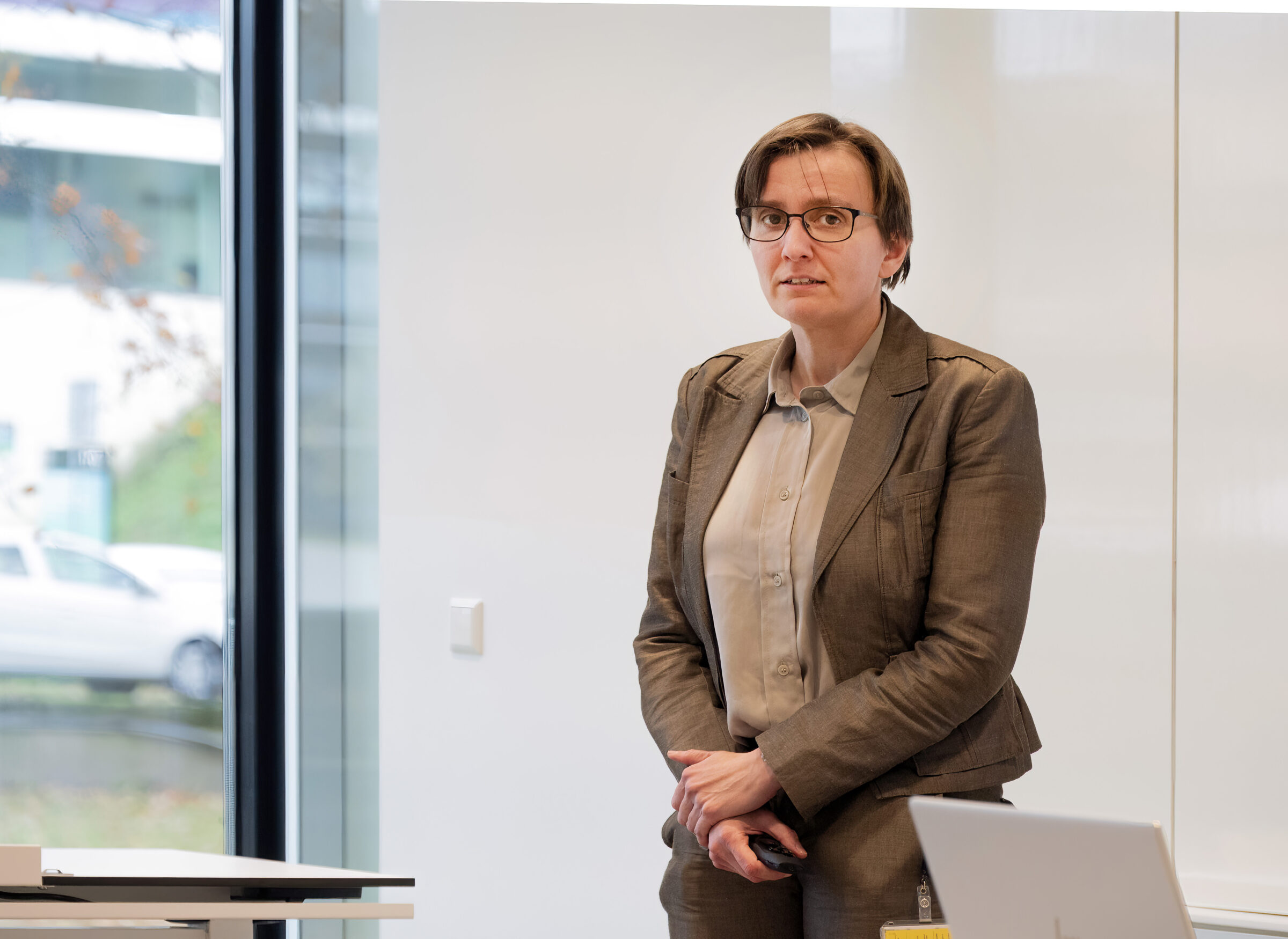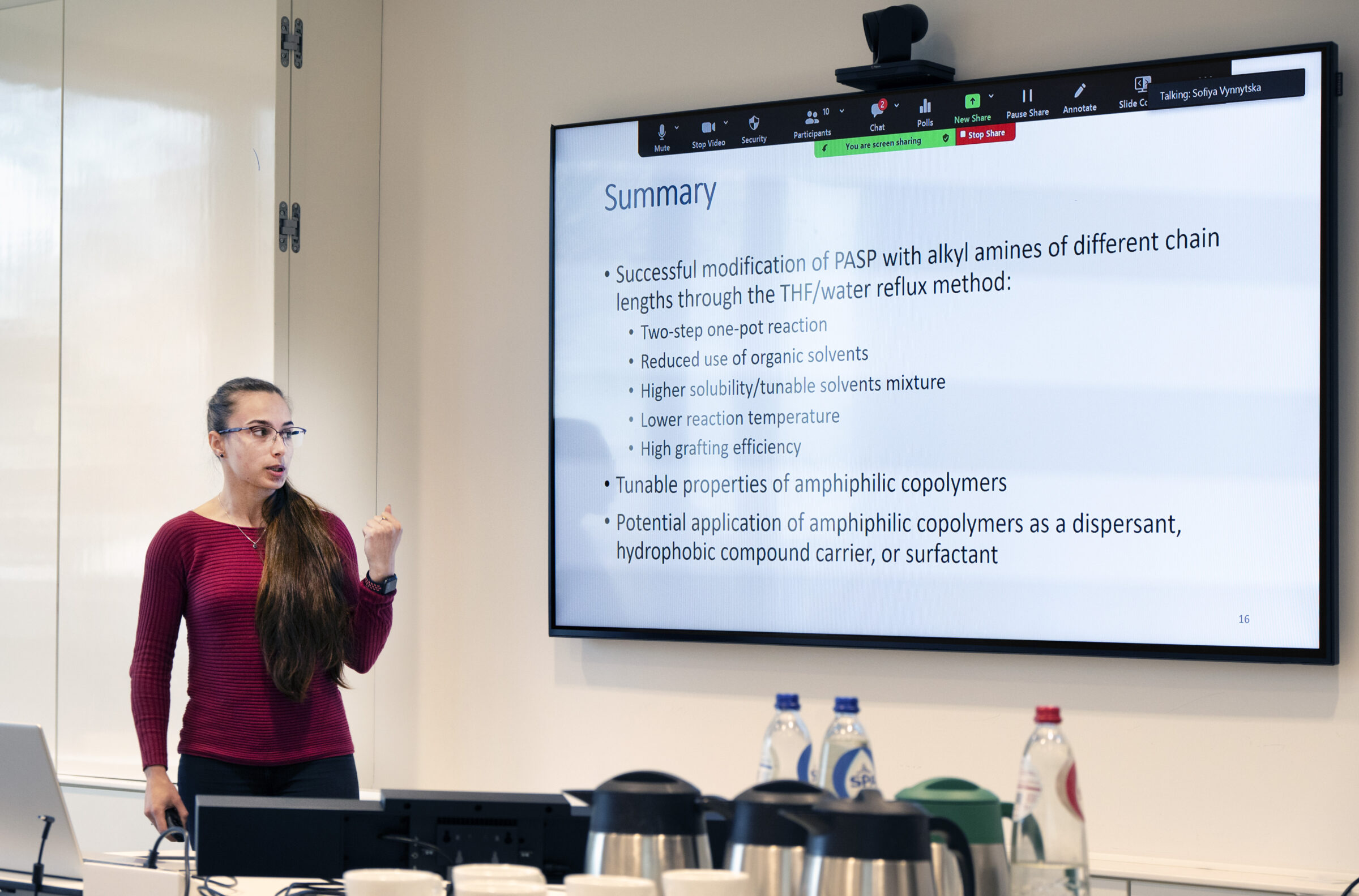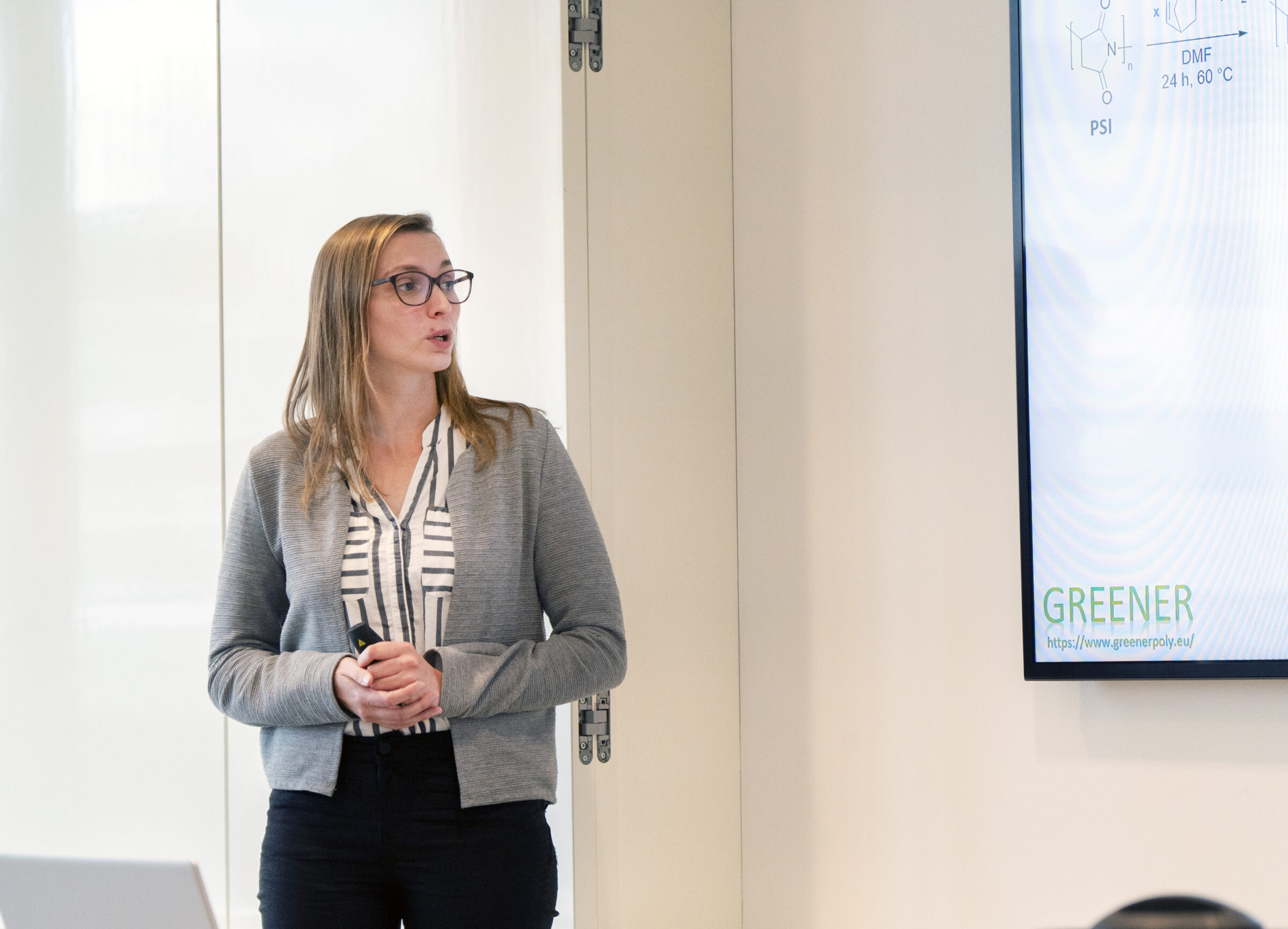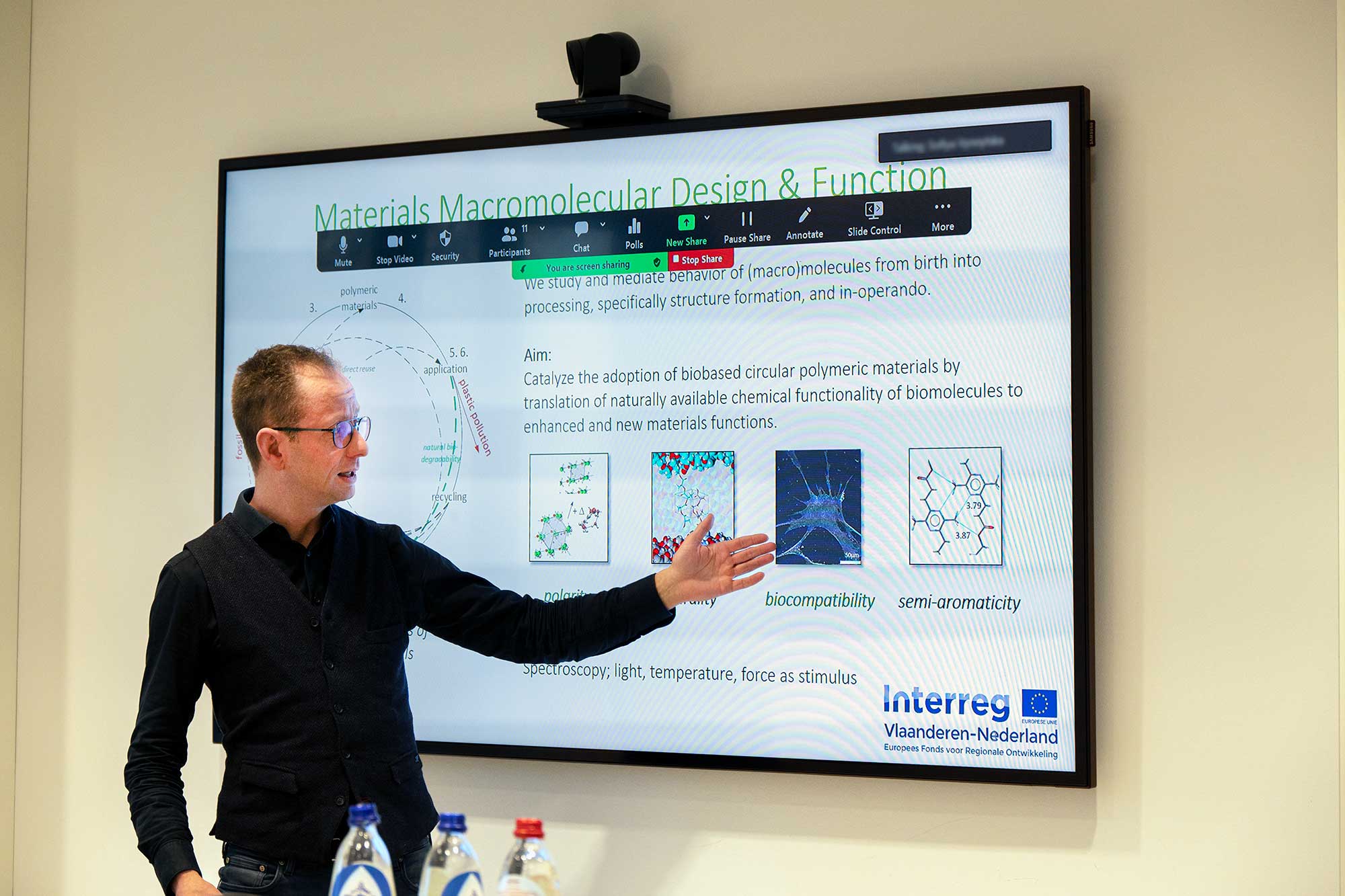The acronym polyASPs refers to poly-aspartates: amino acid-based polymers that can be modified to be full-fledged substitutes for polyacrylic acid in various applications. With an important difference: polyASPs do degrade in the environment.
The research within GREENER, now completed, focused on the use of polyASPs in industrial applications relevant to the southern Netherlands and Flanders. Applications have been identified in paper, coatings, cosmetics, biomedical applications and super-absorbents for self-healing concrete, for example. Bernaerts: “The challenge here was that we also had to master our knowledge of and skills with modifying polyASPs. Because every application requires a modification to obtain optimal performance.”
Mild method
Sofiya Vynnytska, PhD student at Maastricht University in Associate Professor Katrien Bernaerts’ group, is one of the scientists who played a role in researching these modifications. She worked on an efficient mild method for the synthesis of polyASP-based biodegradable amphiphilic copolymers. While standard high-boiling, toxic solvents are used for this type of synthesis, she developed a method using low and less toxic solvents at a low temperature (56 degrees Celsius). Amphiphilic copolymers contain both hydrophobic and hydrophilic components. The ratio between the two types determines the final properties of the polymer. Possible applications can be found in dispersants and surfactants.
These agents could potentially be used in the paper industry, among others. For instance, consortium partner Millvision has investigated them for use as binders in coating formulations and in wet-end applications, for improving the strength and water-repellent properties of paper. But they are also perfectly usable in the chemical industry. This is of interest, for instance, to consortium partner Govi, manufacturer of process chemicals and additives and market leader in wax emulsions and soaps. R&D manager Jan Coquyt: “The hydrophobically modified polyASPs enable us to make stable wax dispersions that are 100% biobased and remain redispersible even after months, simply by shaking the product.”
Network structures
Taking a different research direction was Lauren De Grave, PhD student at Ghent University in Professor Sandra Van Vlierberghe’s group. In her research, she worked on crosslinkable polyASPs, which can be used to make biocompatible hydrogels, for example, but also superabsorbent polymers. She succeeded in tailoring the properties of hydrogels by changing the composition of the formulation.
Superabsorbent hydrogels can be used to make concrete self-sealing and self-healing, for example. Research into such technology has been going on at Ghent University for some time. When water enters the concrete through a crack, the hydrogel swells. The water trapped in it causes internal hydration and the precipitation of calcium carbonate in the concrete, thus permanently sealing the crack.
Hydrogels can also be used to make well-defined objects with 3D printing. Tenco DDM from Flanders, for example, prints medical devices with it, such as so-called scaffolds: constructions inserted into the human body to support tissue growth. In particular, this involves muscle tissue, a speciality of Professor Lieven Thorrez of Catholic University Leuven, Kortrijk Campus. Cells have to adhere to such a scaffold. So it must not only biodegrade the moment it has fulfilled its function, but also be biocompatible so that the body does not reject it. Moreover, the adhesion of the cells to the scaffold could be optimised by adding laponite (a rheology modifier) to the hydrogel.
Biodegradability
How do the various modifications of polyASPs affect the potential biodegradability of the materials developed? That question was studied in more detail by Associate Professor Jules Harings of Maastricht University. “We have designed a protocol that allows accelerated degradation testing,” he says. This used Subtilisin, a common enzyme that degrades protein. “This mimics the conditions in industrial composting, degradation in soil or in a marine environment in the lab. The degradation then takes a few days instead of 3, 6 or even 12 months.” The speed of this protocol is an important step forward for developing new materials. The conclusion regarding polyASPs, even in modified form, is that they are well biodegradable under the specified conditions.
Continuation
The GREENER project is now complete and has shown promising results, which will be investigated further. Eventually, only the tip of an iceberg has been explored yet. In fact, the market for fossil polyacrylic acids is huge and growing: some 100,000 tonnes a year at present. The possibilities of replacing them with the more sustainable polyASPs are therefore far from exhausted. Katrien Bernaerts is confident that there will be a follow-up, at least in the cooperation between the companies and knowledge institutions involved and perhaps in the form of a second GREENER project under the new Interreg VI programme.
This article was produced in cooperation with GREENER.
Image above: hydrogel, by Gilmanshin/Shutterstock







